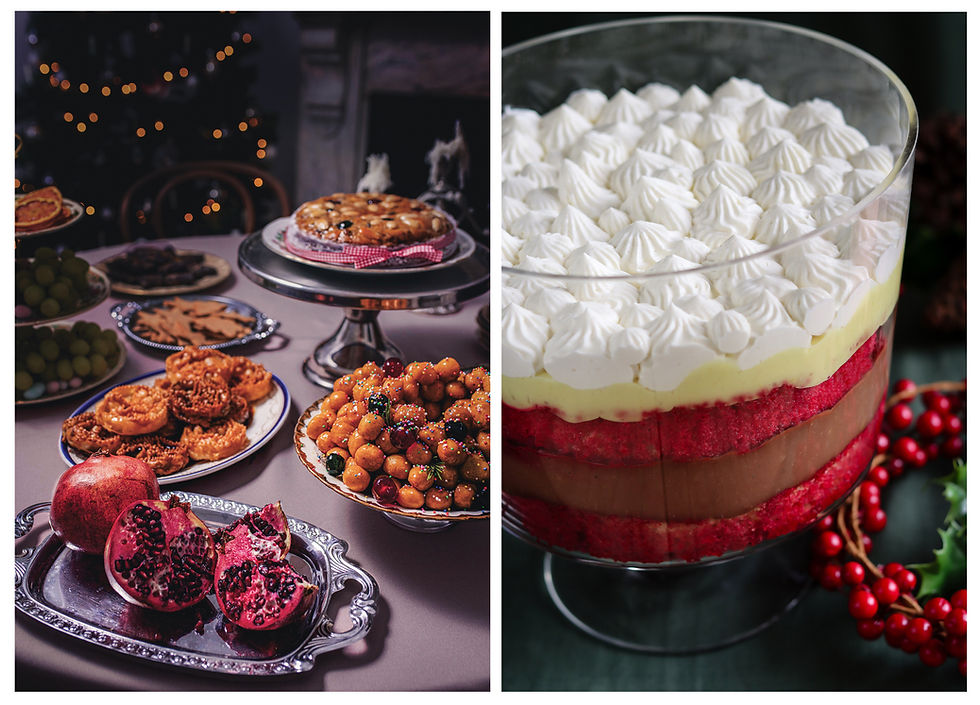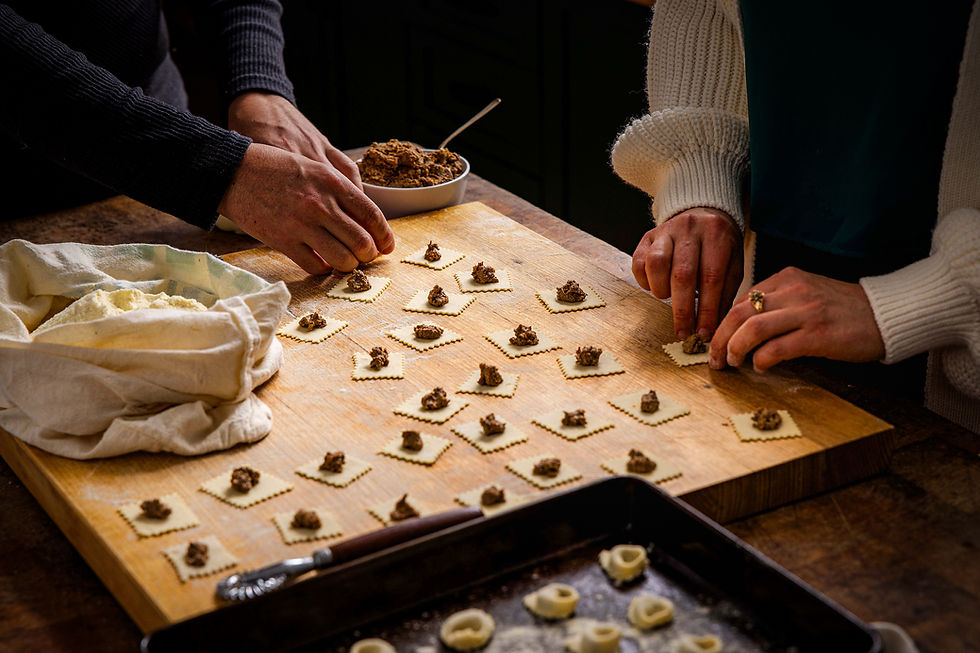PART 2: 10 important steps to self-publishing your cookbook
- Nadia Fragnito

- Jan 22, 2022
- 6 min read
Updated: Jan 30
In the last blog we started with your theme and getting clear on the ‘why’ of your cookbook. Now it's time to get practical. Let’s get stuck right in. This blog is about the recipes, as well as a few extra elements that will be helpful to start considering for getting print ready. Let’s delve into what’s involved in self-publishing your own cookbook.

Let’s start with your recipes. Sounds obvious doesn’t it? But there are many factors involved in the recipe element of your cookbook.
How many recipes will you have?
50?
70?
100?
150?
For the record, I don’t recommend starting your debut cookbook with 150 recipes! I just used that number for dramatic effect.
And even if you are considering 100 recipes for your first cookbook - think carefully about what is involved. The more recipes you include, the longer it will take to publish your book in the long run. Trust me, a 150 page cookbook of 50 recipes took me a fraction of the time compared to my latest cookbook which sits at 320 pages, 70 recipes and travel stories.
HERE ARE 10 PRACTICAL STEPS TO TAKE ACTION WITH
1. Make a list of ALL your recipes
Write down your ‘wish list’ of recipes. Do this even if you don’t quite know how to make them all yet. You will. Just get it all written down.
2. Choose your recipe structure and order
You need some kind of structure or chapters. Will they be ordered into starters, sides, mains, desserts, drinks? Or according to season? Or meal types like breakfast, lunch, dinner, dessert, snacks? Or in my case, my chapters were regions. And from there they were ordered from into starters through to drinks. Finally, are your recipes balanced? For eg, do you only have 20 desserts and only 3 starters? Will you need more of a certain recipe type? Does this even matter? Maybe it doesn’t. Just consider it.
3. Get testing
I’m a big believer in testing your own recipes to your highest standard. Over and over again. You can also get others to test your recipes. However you choose to do it, you need to test thoroughly. Once you’ve nailed the recipe. Test it again exactly the same way. Are there any inconsistencies? Often there will be. Note them down. Speaking of noting things down, have a system of recording. It doesn’t matter if it's digital, handwritten or a combination of these - but be sure to date or number your recipe tests. Perhaps you’d like to draw up a table of all your recipes too - it may help to have a visual recording to help you keep track of your progress.

4. Gather your tools
You’ll be buying a lot of ingredients. Keep the receipts. Claim these on tax if you have an ABN. You’ll also need props: plates, bowls, cutlery, tableware, napkins, etc. You may already have a good collection of props - but take an inventory with your recipes in mind. Are there items that are missing? For example, I had to find just the right glass for my Caffe Leccese recipe. I also needed to buy a wider variety of interesting cutlery. Second hand stores are handy, as are places like Kmart for basics and Myer for their tableware.

5. Write your recipes
You need to start writing your recipes formally. List the ingredients and quantities, the method, cooking times and serving sizes. Some cooks list the nutritional value of each dish - but I personally don’t bother, because 'health' is not my focus. Think about your recipe introduction (the paragraph that introduces your recipe). In this paragraph you might like to write about the story behind the dish, its history. Or your personal connection to it, a personal story or memory. Or perhaps include practical tips - particular ingredient substitutions or special equipment they’ll need for the recipe. Don’t be shy to look to other cookbooks for inspiration on how you’d like to format your recipes. There are different ways to present a written recipe. Do you keep it factual? Or would you like to put a bit of your own language and personality into it?
6. Plan your photos

If you are the photographer (or even if someone else is taking the shots) you’ll need to have a set up and props in place. Because when you’re ready to plate up your dish, you don’t want to be taking too long to get snapping. You’ll want your recipe to look fresh and at its best. Having said that, some dishes will serve up better after they’ve cooled down. For example, I always leave my Torta Caprese (a gluten free chocolate cake) to rest overnight and even pop it in the fridge so it slices its best for a photo. Either way, preparation is key. Also have a clear idea of the kind of shot you want. What style, what angle, the general colour palette (look online for colour wheels - of colours that work well together). Having said that, your intuitive ‘eye’ might be all you need for the styling. Grab all the props you want to use, have them on standby. Ingredients like herbs, pepper and oil for finishing touches and garnishes.
7. Protect your photos and files
It’s really important you protect all that work! Consider where you’ll be storing your recipe files and photos. Have a system. Will you store your files in folders on your computer, on an external hard drive or online, like Google Drive? However you choose to do it, have back ups. Store your files in different places. Because, sometimes technology crashes. Things can get lost. So be intentional with where and how you store your work so that those nightmarish things don’t happen. You’ll be putting a lot of time and resources into this. Protect your sanity!
8. Consider those extra chapters

All cookbooks need Contents, Introduction, Thank you/Acknowledgements, Copyright and Index pages. As a bare minimum. Perhaps you’d like to include other sections, like a shopping list of essential ingredients, or chapter introductions. My first book, Discovering Vegan Italian included these pages. Also, you will need a blurb for the back of your book.
9. Design the cookbook file

Now, here’s a big one. How will you create and design your cookbook file? You’ve got individual photos and recipes all ready to go - but how will you format this beautiful creation of yours? You have 2 choices. You do it yourself. Or you get someone else to. I created my cookbook in Adobe InDesign. It was a learning curve, as I had never used the program before. But I had some help setting it up and then the rest was up to me. I got frustrated many times. I was in the deep end! But little by little I learned a great deal. And every time I ran into something I didn’t know how to do - I'd Google the issue or find an instructional tutorial on YouTube.
There is also the design to consider. Do you have a good ‘eye’ for font and design and placement? If not, can you get inspiration somewhere else? Will you find a professional graphic designer? If you can, that would be money very well spent! Or perhaps you have a friend who you can get some pointers from.
10. Choose your cover

Your cover page is important. It will be your reader's first impression of your book. Start considering the type of cover. Imagine what you'd ideally like, the essence of your book - and then work out how possible it is to achieve this. Is it a photo? Of what? What will it take to achieve this photo? Do you have a professional photographer? Can you buy a stock photo or even take it yourself? Or will it be illustrated or text based? How will this be created? Do you need to commission an artist or graphic designer for this? Create a mockup of the cover, including where you might want the title and author's name to go. Before the photo is taken or the artwork is created, your should know the design and format of the entire cover. It will help in the long run.
Phew! It’s a lot to consider isn’t it?
Whilst this blog doesn't take you into all the nitty gritty details of the entire process - I hope this provides an insight into what is involved in self-publishing your cookbook.
To help you along, I highly recommend the book Will Write For Food by Dianne Jacob. It has a great chapter with cookbook writing tips.
However you plan to get started - get started. Chip away at it. It really is a wonderful, rewarding and worthy project to spend your time on! Challenging yes, but aren’t all good things?
Do you have any questions? Are you planning on writing a cookbook? Feel free to comment below.





My book of recipes will never make it... I never measure. I just guess. I know I should measure so I can record and share but... One day. Maybe.
Great tips here. Thanks Nadia.